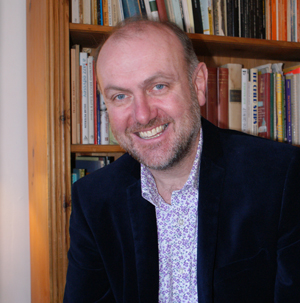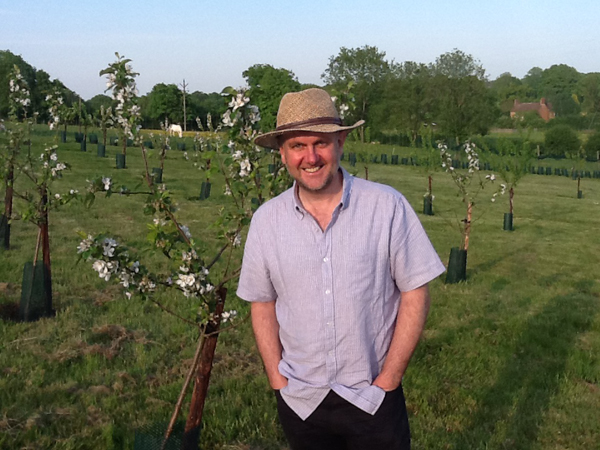News: What would it take to make 2014 a Happy New Year?
By Dr Tom Scanlon, Director of Public Health for Brighton and Hove
It’s that time when we all wish one another a “Happy New Year”. We might bring round a lump of coal, a clootie dumpling or, if you’re lucky, a tall dark handsome stranger in an effort to increase our chances. Some of us will make New Year resolutions with the intention of making next year better than the one that went before. But, is there a recipe for a Happy New Year? Are there things we can do to make our lives happier or is it all in the lap of the gods?

Happiness is certainly the eternal pursuit – rich or poor. We all want to be happy. But what does being happy mean exactly? What does it comprise and what is the influence of age, gender, ethnicity, religion, wealth and neighbourhood? What about those lifestyle behaviours that we adopt in the apparent quest for more happiness – tobacco, alcohol, drugs, sexual encounters? Do they make us more, or less, happy?
Lots of questions and last year the city’s Public Health team set about trying to answer some of them by conducting a Happiness and Wellbeing Survey of the population of Brighton and Hove. This was not a frivolous endeavour. There is a lot of evidence that if you make people happier, you make them healthier and correspondingly reduce the burden on health and social care.
Furthermore, studies of twins show that happiness is only 50 per cent inherited – you can actually teach people to be more happy (well most of them). So what have we learned and what do we need to make Brighton and Hove happier?
Well, the survey showed that Brighton and Hove is quite a happy place. Men and women are equally happy though women are more satisfied with their lives, albeit with higher levels of anxiety. Older people report higher levels of happiness than younger people – so much for grumpy old men and women. There were also some interesting findings across neighbourhoods and within different social groups.
“Residents of Rottingdean have the highest levels of life satisfaction and happiness in the city”
Residents of Rottingdean have the highest levels of life satisfaction and happiness in the city. Buddhists too reported very high levels of feeling that life was worthwhile and happiness.
By contrast, and somewhat surprisingly, Muslim groups reported lower levels of life satisfaction and happiness with significantly higher levels of anxiety.
Heterosexuals reported higher levels of life satisfaction, happiness and a sense of belonging compared with the lesbian, gay, bisexual and transgender community. Black and Black British residents reported higher levels of happiness and life satisfaction compared to white residents.

That may be all very well but where does it take us? Few of us are in a position to change our religion, sexuality, gender, age or ethnicity, and even a change of residence is beyond the means of many. So what about the things we can influence – our lifestyles, our sexual behaviour, diet and exercise, smoking, drinking, drug use – how do they affect our happiness?
Well, sex and drugs do go together but alas not with any resultant happiness, rather with a much higher risk of sexually transmitted infections. Residents who use drugs are almost three times as likely as those who don’t to catch a sexually transmitted infection, and those who drink at risky levels twice as likely. Furthermore, there is an association between increasing numbers of sexual partners and unhappiness – residents who reported just one partner in the previous year had the highest levels of happiness. Smoking doesn’t help either (probably not even after sex) and people who had never smoked were much happier than former smokers, who in turn were happier than current smokers. Of course, you may argue that unhappy people smoke rather than smoking makes you unhappy – but evidence from other studies confirms that if you start smoking, you become less happy. Residents who were physically active reported higher levels of happiness than those who weren’t and, interestingly, older people were much more likely to exercise regularly than younger people – maybe that is part of the reason they are happier.
So what are we to make of all this and how will it help us have a happier New Year? Well, unfortunately we in Public Health do have a bit of a reputation as killjoys. But I try to stay away from “Don’t” messages – don’t drink, don’t smoke, don’t take drugs, don’t have casual sex – not because these messages are wrong but rather because they don’t always work. Better if you can give out a positive message. And there are things that we know can make us happy. In fact, it’s quite simple.
1 Connect: Link up with the people around you – at work, at home, at school, in the community. The Christmas period is a great time for this but a lot of people find it a very lonely time. Try to connect with someone new. The chances are it will make you – and them – happy.
2 Be active: You don’t have to run a marathon or join a gym. Just go outside, walk a bit more, get out the bike, go dancing. Find a way of keeping active that you enjoy and go out and enjoy it.
3 Take notice: Savour the moment, enjoy the view, the seasons, eating lunch, chatting with friends. It’s all good but we can take it for granted. Reflect on it and you will enjoy it more still.
4 Keep learning: Take up something new or rediscover an old interest. Take on a different responsibility at work, set yourself a bit of a challenge. It’s very likely to make you more happy.
5 Give: This might seem a bit easy at Christmas-time with the relentless exchange of gifts – some of them better meant than others. But give of yourself. Smile, say thanks, maybe volunteer. Give something that connects you to other people. It will make you happy.
So there you are, five easy ways to have a happier New Year. Go on, pick one – start easy. Happiness is there for the taking. Go ahead – and have a Happy New Year.





















